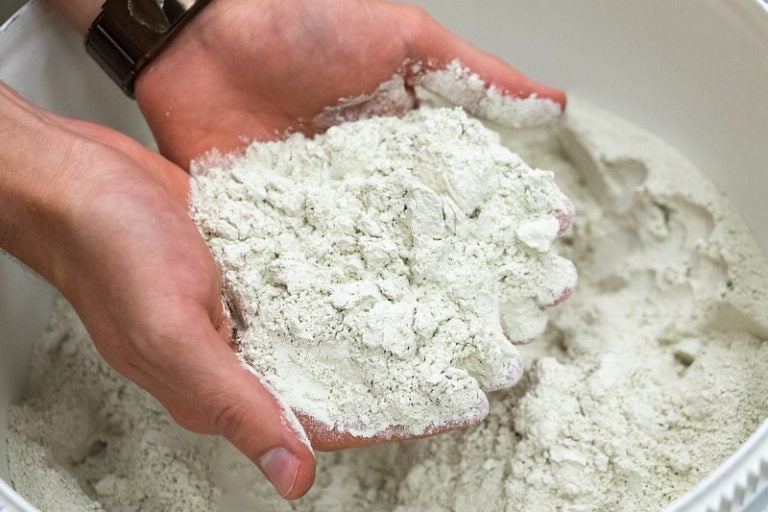A study published today in Nature provides a new explanation for how clay formed on Mars, which could help scientists and engineers figure out how to unlock the early climate history of the planet.
“The basic recipe for making clay is you take rock and you add heat and water,” said Kevin Cannon, a postdoctoral researcher at the University of Central Florida who led the research while completing his Ph.D. at Brown University. “This same material used for ceramics and pottery on Earth is also found on Mars, and now we think it may have formed beneath a thick steamy atmosphere just after the planet formed.”
There are thousands of clay outcrops on the Martian surface and more buried underground. This kind of clay is formed by the interaction of water with volcanic rock, leading many scientists to conclude there must have been widespread surface water or an active hydrothermal system at some point in Martian history. But the new research suggests the clays formed during the creation of the Martian crust itself, long before any water could have flowed on the planet. The scattering of the clay would be the result of impacts on the Red planet years after its initial formation.
Cannon and his co-authors, planetary scientists at Brown, said the scenario offers a means of creating widespread clay deposits that doesn’t require a warm and wet climate or a sustained hydrothermal system on early Mars. State-of-the-art climate models suggest an early Mars where the temperature rarely crept above freezing and where water flow on the surface was sporadic and isolated.
To test his theory, Cannon and his team recreated the conditions of early Mars in a lab at Brown. They used synthetic Mars basalt, high temperatures and pressure vessels to see what would happen. The results of the two weeks of testing supported the team’s hypothesis.
Then the team worked to create computer models to run simulations about what would have happened to the clay over time as the planet faced impacts from asteroids, which are evidenced today by the large craters seen on the surface. The simulations took more than a year to account for dozens of variables.
“One of the complications that comes up in Mars evolution is that surface weathering doesn’t seem to have had the capacity to produce the extent of mineral alteration that we see,” said John Mustard, a planetary science professor at Brown and study co-author. “We’re certainly not trying to discount other alteration mechanisms entirely. Surface weathering and other types of alteration surely occurred at different points in Martian history, but we think this is a plausible way to explain much of the widespread clay we see in the oldest Martian terrains.”
Together the lab experiments and computer modeling support the new theory. By better understanding the formation of the clay and its evolution over time, researchers will have more clues in figuring out the earliest history of Mars and potentially other planets, Cannon said.
Cannon joined UCF in July to work with Professor Dan Britt, who also runs NASA’s Center for Lunar & Asteroid Surface Science. Britt is also working with private asteroid mining companies and on several NASA missions including Lucy and New Horizons. Cannon said he was drawn to UCF because of the Planetary Sciences Group’s reputation and the university’s goals to conduct research that can make an impact.
“It was really exciting to me to come here where the work is hands-on and you are potentially helping prep for space exploration,” Cannon said. He also was the recipient of the university’s Preeminent Postdoctoral Program, which helps fund postdoctoral scholars.
Cannon has a Ph.D. in earth, environmental and planetary sciences from Brown University. He also has a degree in geological sciences from Queen’s University in Canada. His research focus at UCF includes diverse topics within planetary science, particularly surface mineralogy, comparative planetology and resource utilization. He is currently working on creating realistic Mars and asteroid regolith simulants.
Co-investigators on the paper are Stephen W. Parman and John F. Mustard from the Department of Earth, Environmental and Planetary Sciences at Brown University.
